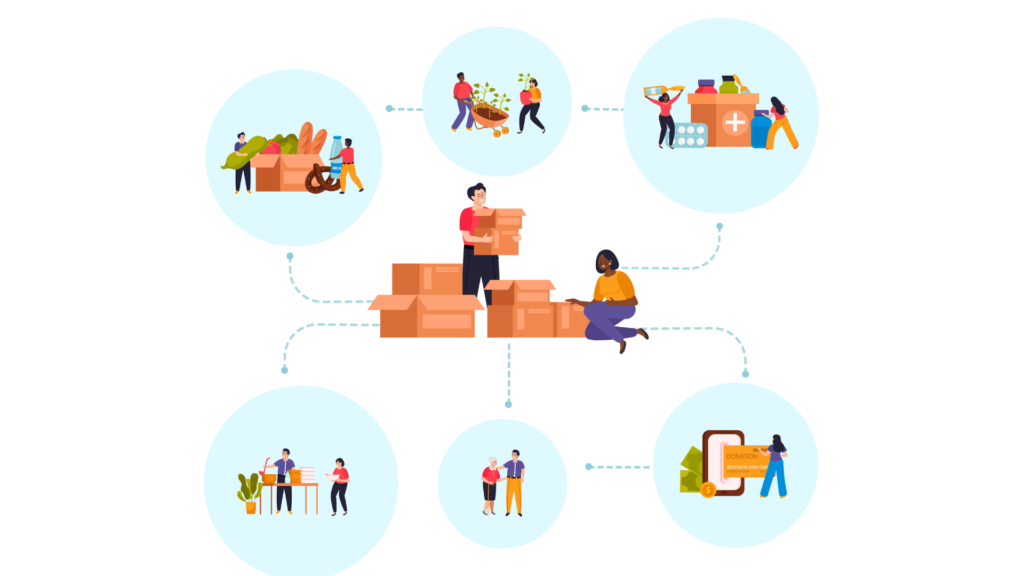To capitalize on early purchase discounts and streamline operations, organizations must abandon archaic procurement practices and embrace technological advancements. Automating the procurement process offers a plethora of advantages. With modern procurement tools, organizations can swiftly transition from sluggish strategies to highly efficient processes.
If your procurement workflow still clings to outdated methods, it’s high time for a technological transformation. Here’s a comprehensive guide to revamping your procurement process and unleashing its full potential.
What is Procurement?
What is a Procurement Process?
This process entails a series of steps essential for moving from requisition to purchase order and invoice approval. While purchasing and procurement are often used interchangeably, they have subtle differences. Purchasing refers to the overarching process of obtaining goods and services, while procurement encompasses the activities involved in reviewing, ordering, obtaining, and paying for these items.
The procurement process is tailored to the specific context and needs of each organization. However, it typically revolves around three key elements: Process, People, and Paperwork. These elements guide the review, selection, and management of suppliers, ensuring efficient and effective procurement practices.
1. Process
2. People
3. Paperwork
Steps involved in a Procurement Process
Here are the seven key steps involved in the procurement process flow:
Step 1: Purchase Requisition
Step 2: Requisition Review
Approved requisitions are converted into purchase orders (POs), while rejected ones are returned to the requester with an explanation. This process can be efficiently managed using purchase order software.
Step 3: Solicitation Process
Step 4: Evaluation and Contract
Step 5: Order Management
Step 6: Invoice Approvals and Disputes
This step involves crucial invoice processing tasks, made more efficient with procurement software like Zapro Procurement. Using such software, three-way matching between goods received notes (GRN), supplier invoices, and POs ensures accurate orders and resolves discrepancies. Once matching is complete, invoices are approved for payment processing.
Step 7: Record Keeping
Optimize Your Procurement Process
Streamline Processes with Automation
Centralize Procurement Activities
Conduct Spend Analysis
Implement Strategic Sourcing
Establish Clear Procurement Policies
Foster Stakeholder Collaboration
Integrate Systems
Monitor Supplier Performance
Best Practices for Optimizing the Procurement to Pay Process
- Centralize Procurement Function:
Establish a centralized procurement function or team responsible for managing procurement activities. Centralization enables better coordination, standardization, and control over procurement processes.
- Standardize Procurement Policies and Processes:
Develop clear and standardized procurement policies, procedures, and processes. This ensures consistency, reduces errors, and facilitates compliance with regulations and industry best practices.
- Leverage Technology Solutions:
Invest in technology solutions that automate procurement processes, such as e-procurement systems, invoice processing software, and payment automation platforms. These solutions streamline workflows, improve accuracy, and enhance visibility.
- Establish Clear Roles and Responsibilities:
Define clear roles and responsibilities for procurement, finance, and other relevant stakeholders. This ensures accountability, reduces bottlenecks, and improves collaboration throughout the procurement to pay cycle.
- Implement Supplier Performance Management:
Establish supplier performance management processes to monitor and evaluate supplier performance on an ongoing basis. This enables data-driven decision-making, fosters continuous improvement, and strengthens supplier relationships.
- Promote Collaboration and Communication:
Foster effective collaboration and communication between procurement teams, suppliers, and finance departments. This ensures alignment, reduces misunderstandings, and facilitates timely resolution of issues.
- Regularly Review and Optimize Processes:
Continuously review and optimize procurement processes to identify areas for improvement. Solicit feedback from stakeholders, monitor key metrics, and embrace new technologies or industry best practices to stay ahead of the curve.
By adopting these best practices, organizations can optimize their procurement to pay processes, drive efficiency gains, and achieve significant cost savings.
Technology Solutions for Streamlining the Procurement to Pay Process
- E-Procurement Systems:
E-procurement systems enable organizations to automate and streamline the entire procurement process, from requisition to payment. These systems provide a centralized platform for managing procurement activities, supplier catalogs, purchase orders, and approvals.
- Invoice Processing Software:
Invoice processing software utilizes optical character recognition (OCR) technology to automatically extract data from invoices, eliminating the need for manual data entry. These solutions can integrate with accounting systems, automate matching of invoices with purchase orders and receipts, and streamline the approval process.
- Payment Automation Platforms:
Payment automation platforms enable organizations to automate payment processes, reducing manual effort and improving cash flow management. These platforms can integrate with banking systems, enabling electronic payments such as ACH transfers or virtual cards.
- Supplier Relationship Management (SRM) Systems:
SRM systems provide organizations with a centralized platform for managing supplier relationships, contracts, performance metrics, and collaboration. These systems enable organizations to track supplier performance, negotiate better terms, and drive continuous improvement.
- Analytics and Reporting Tools:
Analytics and reporting tools provide organizations with real-time visibility into procurement activities, supplier performance, and financial metrics. Dashboards and reports enable stakeholders to monitor key performance indicators (KPIs), track savings, and identify areas for improvement.
- Mobile Applications:
Mobile applications enable employees to submit purchase requests, approve invoices, and track procurement activities on-the-go. These applications provide flexibility and accessibility, ensuring timely approvals and efficient communication.
When selecting technology solutions, organizations should consider their specific needs, scalability, integration capabilities, and ease of use. It is important to evaluate vendors, seek recommendations, and conduct thorough testing to ensure the chosen solutions align with the organization’s goals and requirements.
